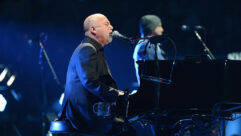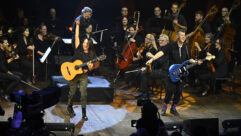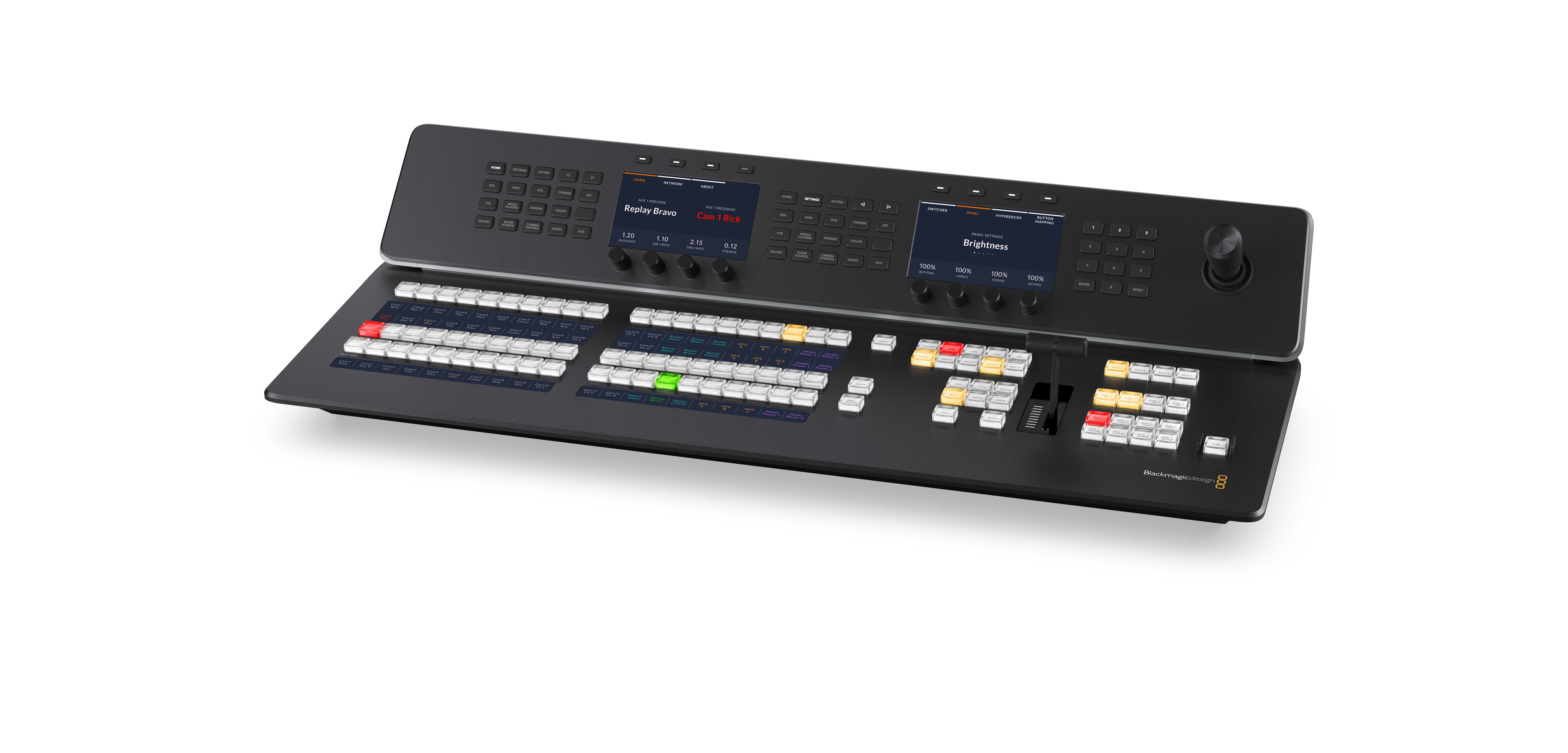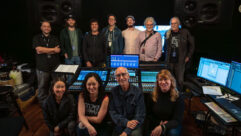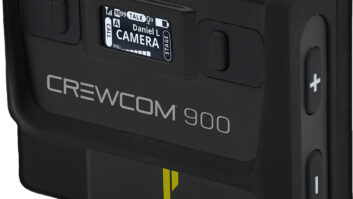
Behind the Scenes at Austin City Limits, Part 1
Aug 17, 2011 4:01 PM,
with Bennett Liles
Listen to the Podcasts
|
Editor’s note: For your convenience, this transcription of the podcast includes timestamps. If you are listening to the podcast and reading its accompanying transcription, you can use the timestamps to jump to any part of the audio podcast by simply dragging the slider on the podcast to the time indicated in the transcription.
The longest running music show on television is the PBS hit Austin City Limits and Curtis Kasefang is here to give us a look behind the scenes on how the show is lit and taped in the show’s new venue Austin’s Moody Theater. Coming right up on the SVC podcast.
Hello Curtis and thanks for being with me here on the SVC podcast.
It’s my pleasure.
OK we’re talking about lighting here on Austin City Limits, the long running PBS program, but first a little about Theatre Consultants Collaborative.
That is correct.
So exactly what is that outfit and what do you do there?
Well, Theatre Consultants Collaborative is, as its sounds, a full-service theater consultancy. We do everything in terms of specialty consulting except acoustics. We’re a virtual corporation founded eight years ago, and there are 12 of us in seven cities and we look at everything from programming of a building, how to cut space sizes and where they go in the room, seating site lines, lighting, sound rigging, and we also work rather closely with mechanical, electrical, plumbing and structural engineers to make sure they’ve got what they need to make things work correctly for the end user. [Timestamp: 1:45]
And that can be a fast six-handed game sometimes trying to coordinate a lot of stuff that involves hoisting heavy gear, running, cable and fastening things securely. So when you first heard about the new Moody Theater, also known as ACL Live, the new home of Austin City Limits, where along the line did you actually get into the place and get your first good look at it and start working on this?
Well, we were fortunate enough to get in pretty early in the process. We helped them decide on their space program, room sizes—things like that. So we were there actually at the very beginning when the architect even first hopped into the picture so that was a very…very useful and helpful thing for everybody because we had a pretty good round prospective on what we were getting ourselves into and how we could get them what they needed. [Timestamp: 2:34]
And this is really big venue. I don’t think it’s actually bigger in area than what they had before at the PBS affiliate KLRU, but I read somewhere that you built up.
In essence, what we did is we made sure…the KLRU is single floor with technical levels above that in their studio 6A. What we did in this new space is we kept the first floor of this venue the same size as the KLRU venue 6A, but then we added a mezzanine level and then a balcony level to the room so that we could keep it feeling exactly like Austin City Limits in terms of the first floor but when they wanted to do a larger venue for live performance…or a larger taping we could increase the seating capacity by taking advantage of the additional levels, the physical levels. [Timestamp: 3:22]
And that was a big increase in seating capacity. I think you went from something like 300 seats up to a maximum of something like 2,700?
Yeah, if they’re packed to the gills—they can get 2,700 in there and in that configuration the first floor is basically a big mosh pit with a bunch of bars around the parameter and then on both upper levels open. Yes, it’s…more typically around 2,300 seats when it’s in its larger configuration. [Timestamp: 3:5]
And one of the big challenges, of course, they came from doing it in a TV studio, is to have it set up right as a live venue but also having a good layout for TV which can sometimes get in the way of each other. So you had to set up lighting for this widely varying seating capacity and light for both live audience and TV cameras which don’t see lighting exactly the same way as good ol’ people eyes do. So what was the biggest challenge you had on this?
Well, the biggest challenge was the non-technical one. How do we keep the look of this show while increasing the seating capacity? We had another complicating factor in here which is the stage height needed to vary between…about a foot off the ground to about 5ft. off the ground depending on how it was used. You will notice at Austin City Limits, the TV show, the camera is very much your point of view as an audience member and you’re often looking directly at the performer and that’s because the stage is about a foot off the floor in the taping configuration so, as you said we really needed to look at maintaining the audience sightlines obviously but we also needed to get the television lighting angles in there, have a workable trim for the electrics, have a follow spot position that could work at all seating capacities and accommodate the cameras and where they needed to be within the room. [Timestamp: 5:1]
Behind the Scenes at Austin City Limits, Part 1
Aug 17, 2011 4:01 PM,
with Bennett Liles
And now I’ve heard the story both ways—is that the actual stage that was used before at KLRU?
It isn’t actually. Originally we were going to clad the top of it in the original material—someone could literally say, “I’m standing on the same place as Ralph Stanley”—but we discovered when we were getting down to the brass tacks of it that it wouldn’t have survived the change out so it’s the same size but it is actually not the same stage and it actually could go a little larger too. [Timestamp: 5:4]
Now as far as the mechanics and everything, is there anything that you had to install there to make lighting work for a very small audience and then be able to easily re-do it for a much larger audience? Does the TV configuration change at all for different seating layouts?
They have this flexibility to really put a camera wherever they need. We concentrate on making sure they have the same camera positions as what they were used to available to them so that means in essence, two handheld cameras, two pedestal cameras and two cameras on two cranes. The old Austin City Limits venue had a rather enormous crane in there that they inherited from, I believe the Wizard of Oz but, physically, we couldn’t get it out of that building and into this one so they went for a slightly more modern, smaller, jet crane and on top of that because we didn’t have the larger crane we introduced a robotic camera that rides along the mezzanine front so that they can get that…especially that opening iconic shot where you’re coming in from behind the trees on the hilltop outside of Austin and that reveals the audience standing there in front of the stage and the band ready to perform. That’s now done by a robotic camera. [Timestamp: 6:54]
And everybody expects to see that same look so that every move you make on that set you have to go back and reference, “Are people going to be used to seeing this, this way or is this going to change the traditional look of the show?’
Exactly, and the show actually changed to high definition a little bit before we added the new venue so that was a fortunate thing because we were able to get some of the questions answered as to what the impact to high def was going to be and if we needed to do anything to accommodate high def in particular and as it turned out we didn’t which we were all…breathed a sigh of relief over that one, let me tell ya. [Timestamp: 7:31]
I don’t know—this may be a question more for the audio guys—but I know that audio doesn’t get in the way of lighting very much but the lighting can sometimes be heard in the sound—so what’s the power situation? How do you keep those two separated?
We actually had three issues there…it was also not getting garbage into the broadcast power too so we…there is a technical power system for sound in broadcast that’s separate from the lighting power situation. We also physically designed the building so all of the sensitive cable would naturally travel in a route away from the lighting power cable. It was taking the sound system and broadcast stuff and concentrating it stage left—physically lower down—and specifically concentrating all the lighting circuit distribution stage right and high up and that naturally allowed things to work themselves out pretty well. [Timestamp: 8:27]
And where do you actually control the lighting from in the theater?
Any one of about 10 locations. There are four locations to plug in on stage level—two on the mezzanine level, two on the balcony, and one in the video control room and one in the main control room of the broadcast suite. There is actually no theater control room that happens out at the house mix location…but 10 spots…his venue was all about flexibility because we knew the new space would give them new opportunities and having a large room where you could broadcast from was going to present some rather unique opportunities and I know about a month ago they did a live performance that was streamed over the web out of the venue too using…the whole broadcast infrastructure. [Timestamp: 9:13]
And that venue is actually part of a much bigger complex isn’t it?
That is very true. There is a W Hotel that’s attached to it which actually offers all sorts of other interesting opportunities for the hotel in terms of expanding their admission but also allows them to very much identify with the venue and the history that Austin City Limits has with it. It’s a very cool thing. If you stay in the room, they are actually pictures on the walls in all the rooms from the history of Austin City Limits and there’s a nifty little coffee table book in every room that is a history of Austin City Limits and photos of various people who have performed there. Very cool. [Timestamp: 9:5]
Well the show and the venue are well promo’d for visitors before they even get to see a performance there.
Oh yeah, oh yeah and the bars have extra wonderful sound systems and all that just so it carries throughout the property. [Timestamp: 10:03]
A whole complex set up to surround and promote the show. Curtis this has been great getting a little behind the scenes look at the new home of Austin City Limits and in Part 2 we’ll talk about that famous backdrop and how it was put together. Thanks for being here with us.


